Publications
COGNITIVE CONTROL OF ESCAPE BEHAVIOUR
Journal |
While escape is often viewed in classical ethology as an action that is released upon presentation of specific stimuli, successful and adaptive escape behaviour relies on integrating information from sensory systems, stored knowledge, and internal states. This article reviews recent research showing how elements from multiple information streams are integrated to generate flexible escape behaviour.
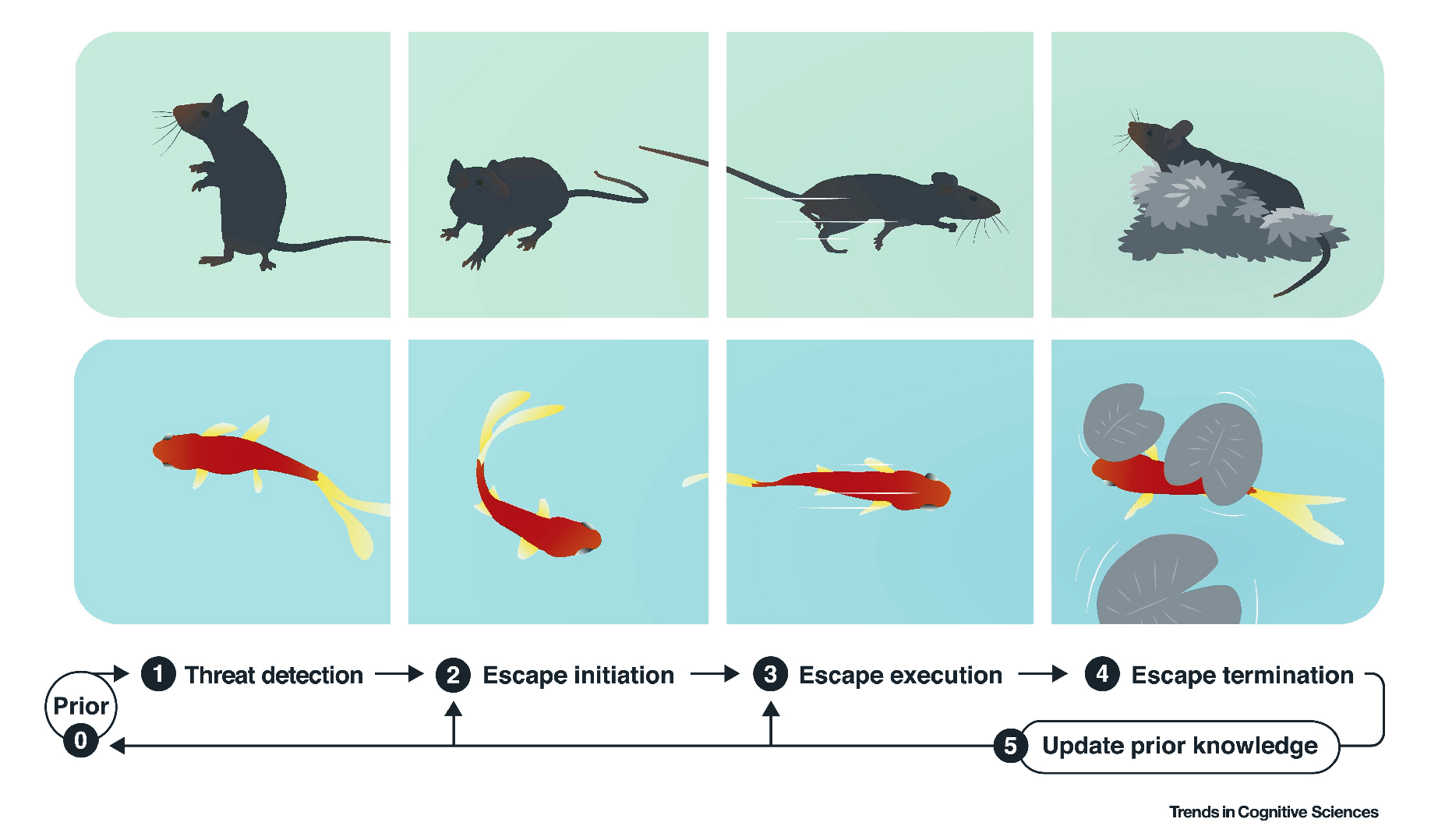
GLOBAL AND MULTIPLEXED DENDRITIC COMPUTATIONS UNDER IN VIVO-LIKE CONDITIONS
Preprint | Journal |
Theoretical work in collaboration with Mate Lengyel developing a new method using a hierarchical cascade of linear-nonlinear subunits to model the somatic response of neurons receiving complex spatiotemporal synaptic input patterns. In L2/3 pyramidal neurons, linear input integration with a single global dendritic nonlinearity achieved above 90% prediction accuracy.
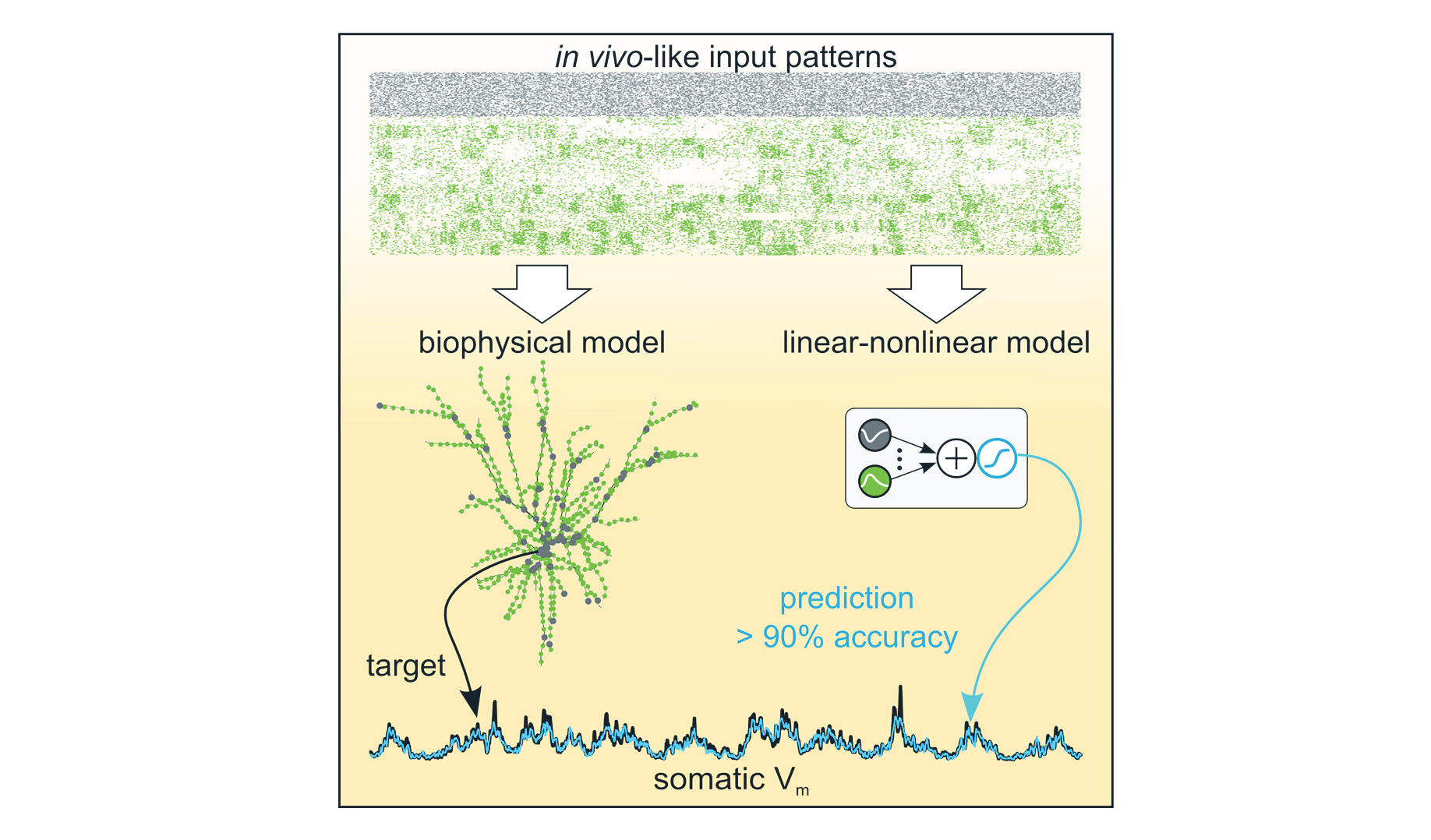
A BEHAVIORAL ASSAY FOR INVESTIGATING THE ROLE OF SPATIAL MEMORY DURING INSTINCTIVE DEFENSE IN MICE
Journal |
This paper describes an ethological paradigm to evaluate the influence of learned spatial knowledge on defensive behaviors in mice. The behavioral assay is based on the Barnes maze spatial memory assay, and tests how mice navigate to a shelter during escape responses to imminent threats in novel environments, and how they adapt to acute changes in the environment.
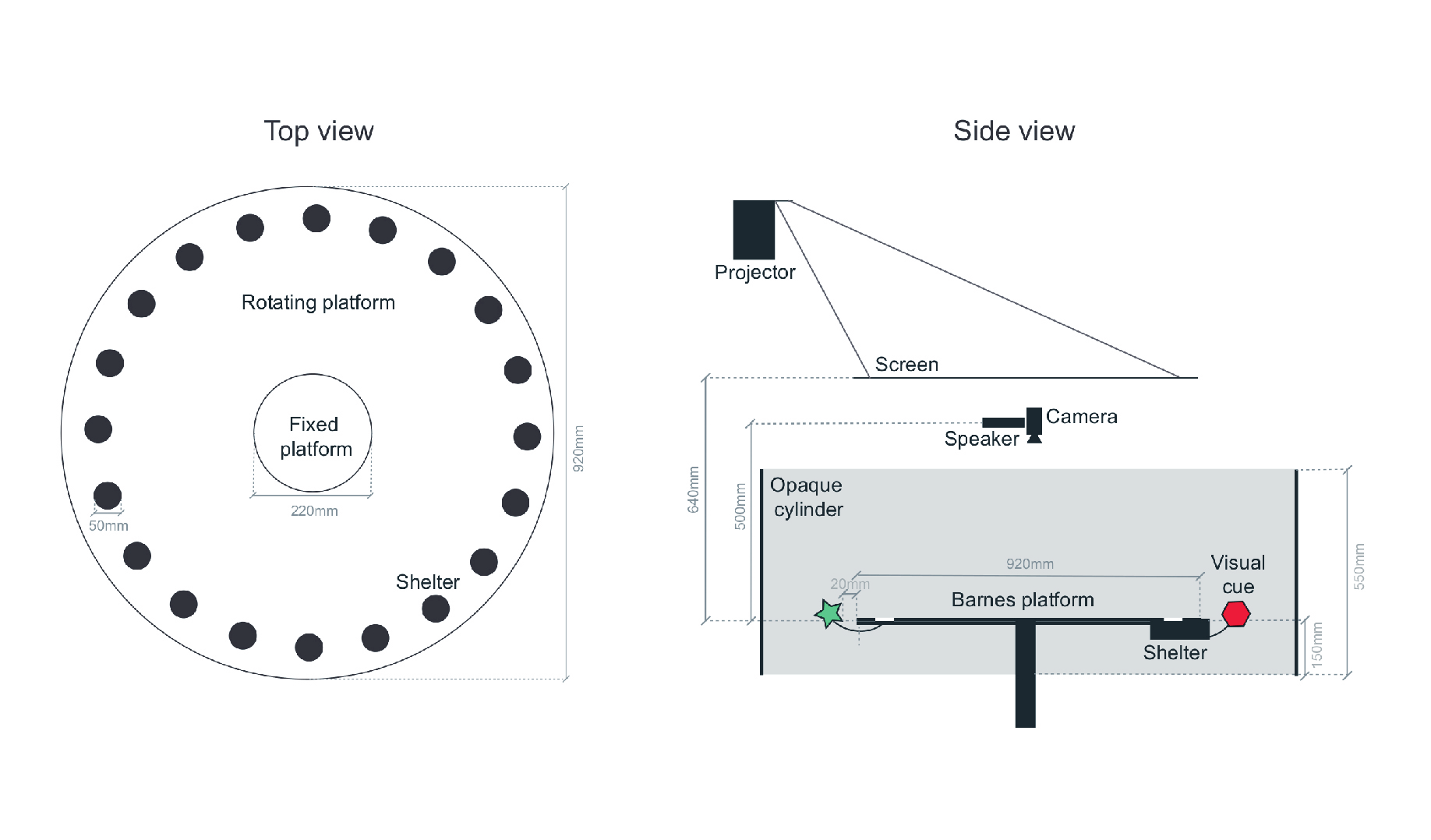
A SYNAPTIC THRESHOLD MECHANISM FOR COMPUTING ESCAPE DECISIONS
Preprint | Journal |
Work showing that the decision to initiate instinctive escape is well described by a theoretical model where evidence of threat is accumulated towards an escape threshold, and that neurons in the medial superior colliculus (mSC) integrate threat evidence, while dorsal periaqueductal gray (dPAG) neurons to compute escape initiation. The synaptic connection between the mSC and the dPAG is weak and unreliable due to low release probability, and provides a synaptic-level realization of the threat evidence thresholding operation.
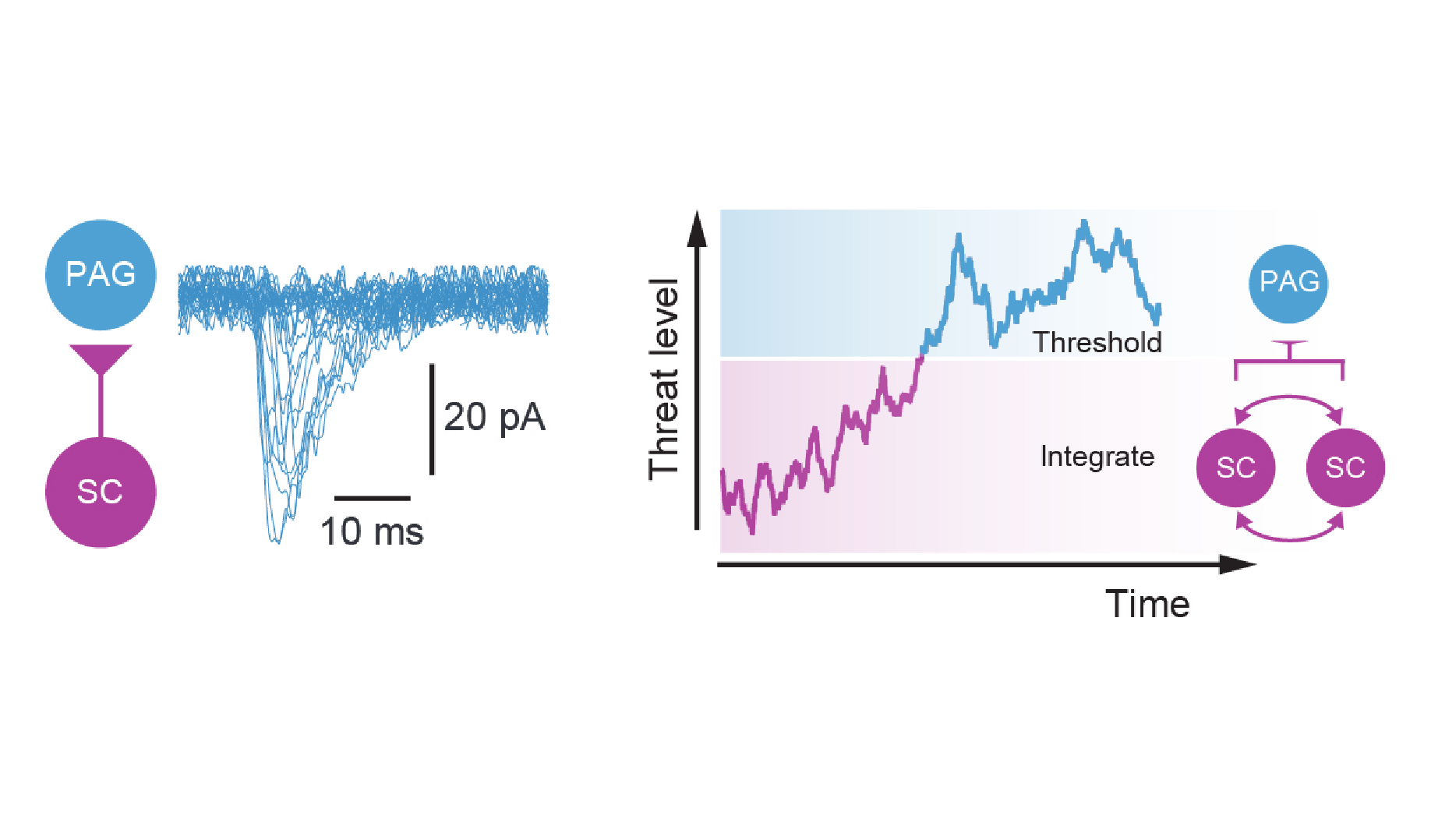
RAPID SPATIAL LEARNING CONTROLS INSTINCTIVE DEFENSIVE BEHAVIOR IN MICE
Preprint | Journal |
This paper describes the results of behavioural experiments showing that learned knowledge about the spatial environment controls escape behaviour. Mice form a memory of shelter location within seconds, and this memory guides not only the execution of escape, but also changes the defensive strategy from escape to freezing, demonstrating that instinctive defensive actions are surprisingly flexible and not simple stimulus-reactions.
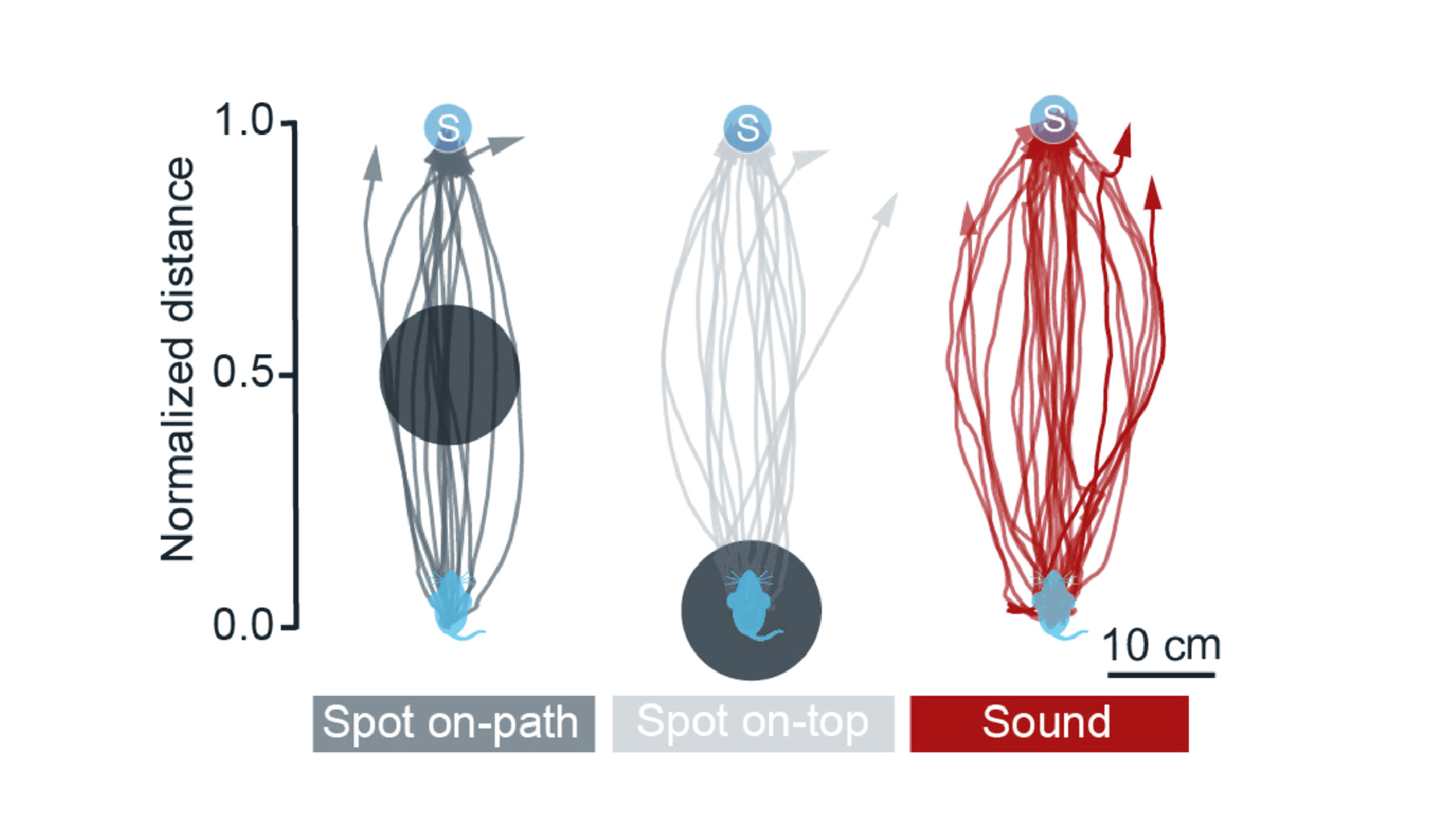
NEAR-PERFECT SYNAPTIC INTEGRATION BY NAV1.7 IN HYPOTHALAMIC NEURONS REGULATES BODY WEIGHT
Journal |
Neurons are well suited for computations on millisecond timescales, but some neuronal circuits set behavioral states over long time periods, such as those involved in energy homeostasis. This work, done in collaboration with Scott Sternson, shows that multiple types of hypothalamic neurons are near-perfect synaptic integrators that summate inputs over extended timescales, due to the voltage-gated sodium channel Nav1.7.
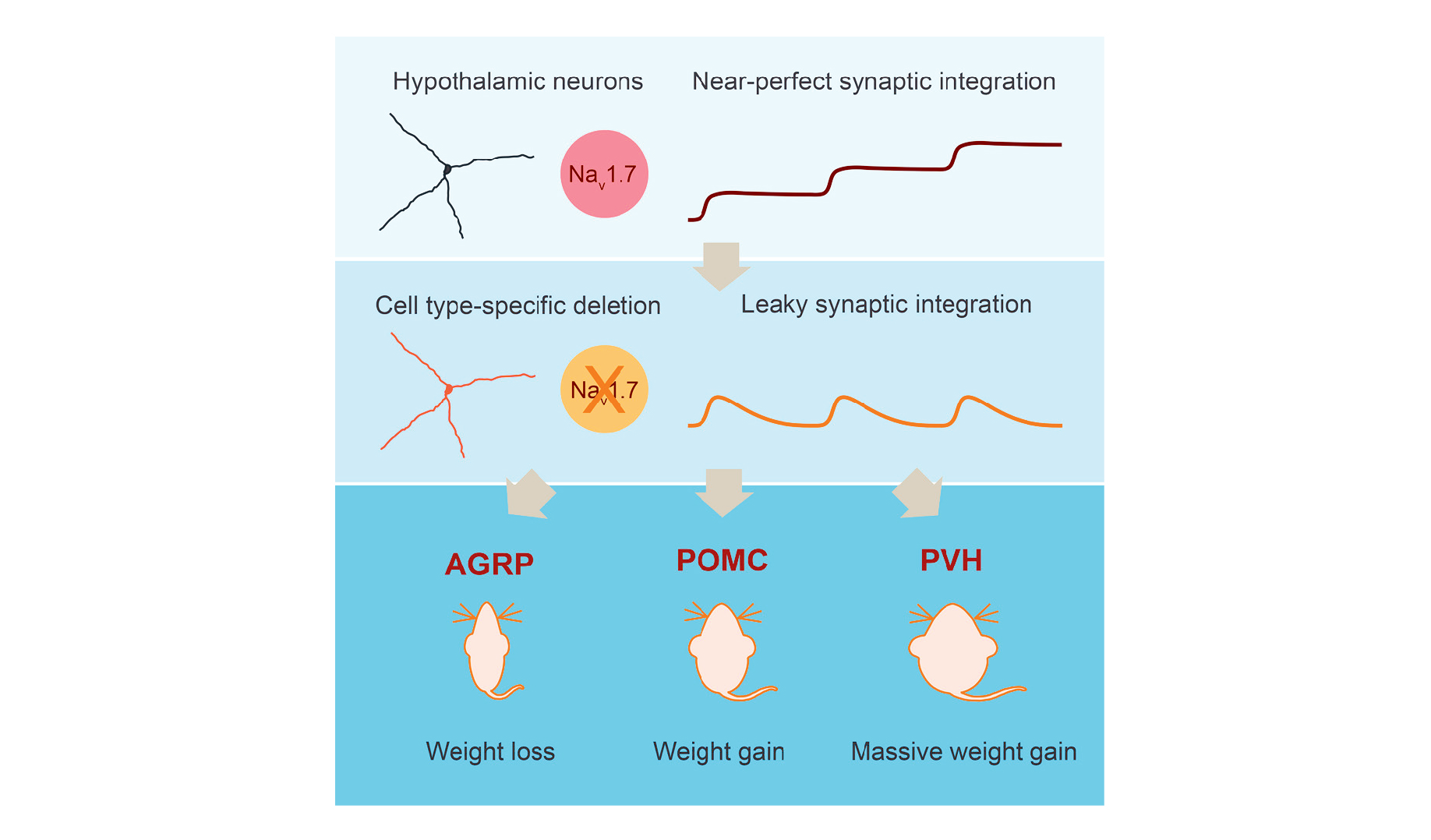
Collaborations
A DISTANCE-DEPENDENT DISTRIBUTION OF PRESYNAPTIC BOUTONS TUNES FREQUENCY-DEPENDENT DENDRITIC INTEGRATION
Journal |
ACTIVE DENDRITIC INTEGRATION AS A MECHANISM FOR ROBUST AND PRECISE GRID CELL FIRING
Journal |
DENDRITIC NONLINEARITIES ARE TUNED FOR EFFICIENT SPIKE-BASED COMPUTATIONS IN CORTICAL CIRCUITS
Journal |
CELL TYPE-SPECIFIC TRANSCRIPTOMICS OF HYPOTHALAMIC ENERGY-SENSING NEURON RESPONSES TO WEIGHT-LOSS
Journal |
ULTRAFAST TISSUE STAINING WITH CHEMICAL TAGS
Journal |
Previous Work
CONTROL OF CEREBELLAR GRANULE CELL OUTPUT BY SENSORY-EVOKED GOLGI CELL INHIBITION
Journal |
DENDRITIC SPIKES ENHANCE STIMULUS SELECTIVITY IN CORTICAL NEURONS IN VIVO
Journal |
A PREFERENTIALLY SEGREGATED RECYCLING VESICLE POOL OF LIMITED SIZE SUPPORTS NEUROTRANSMISSION IN NATIVE CENTRAL SYNAPSES
Journal |
TONIC INHIBITION ENHANCES FIDELITY OF SENSORY INFORMATION TRANSMISSION IN THE CEREBELLAR CORTEX
Journal |
RECRUITMENT OF RESTING VESICLES INTO RECYCLING POOLS SUPPORTS NMDA RECEPTOR-DEPENDENT SYNAPTIC POTENTIATION IN CULTURED HIPPOCAMPAL NEURONS
Journal |
EXTRASYNAPTIC VESICLE RECYCLING IN MATURE HIPPOCAMPAL NEURONS
Journal |
EPPENDORF WINNER. THE LANGUAGE OF DENDRITES.
Journal |
SYNAPTIC INTEGRATION GRADIENTS IN SINGLE CORTICAL PYRAMIDAL CELL DENDRITES
Journal |
EXAMINING SIZE-STRENGTH RELATIONSHIPS AT HIPPOCAMPAL SYNAPSES USING AN ULTRASTRUCTURAL MEASUREMENT OF SYNAPTIC RELEASE PROBABILITY
Journal |
DENDRITIC DISCRIMINATION OF TEMPORAL INPUT SEQUENCES IN CORTICAL NEURONS
Journal |
THE SINGLE DENDRITIC BRANCH AS A FUNDAMENTAL FUNCTIONAL UNIT IN THE NERVOUS SYSTEM
Journal |
SHARING VESICLES BETWEEN CENTRAL PRESYNAPTIC TERMINALS: IMPLICATIONS FOR SYNAPTIC FUNCTION
Journal |
A VESICLE SUPERPOOL SPANS MULTIPLE PRESYNAPTIC TERMINALS IN HIPPOCAMPAL NEURONS
Journal |
THE PROBABILITY OF NEUROTRANSMITTER RELEASE: VARIABILITY AND FEEDBACK CONTROL AT SINGLE SYNAPSES
Journal |
THE SELFISH SPIKE: LOCAL AND GLOBAL RESETS OF DENDRITIC EXCITABILITY
Journal |
LOCAL DENDRITIC ACTIVITY SETS RELEASE PROBABILITY AT HIPPOCAMPAL SYNAPSES
Journal |
CHANGES IN CHROMOSOME ORGANIZATION DURING PHA-ACTIVATION OF RESTING HUMAN LYMPHOCYTES MEASURED BY CRYO-FISH
Journal |
THE SITE OF ACTION POTENTIAL INITIATION IN CEREBELLAR PURKINJE NEURONS
Journal |
MDLL1 AND MDLL3 EXPRESSION IN THE DEVELOPING MOUSE BRAIN: ROLE IN THE ESTABLISHMENT OF THE EARLY CORTEX
Journal |